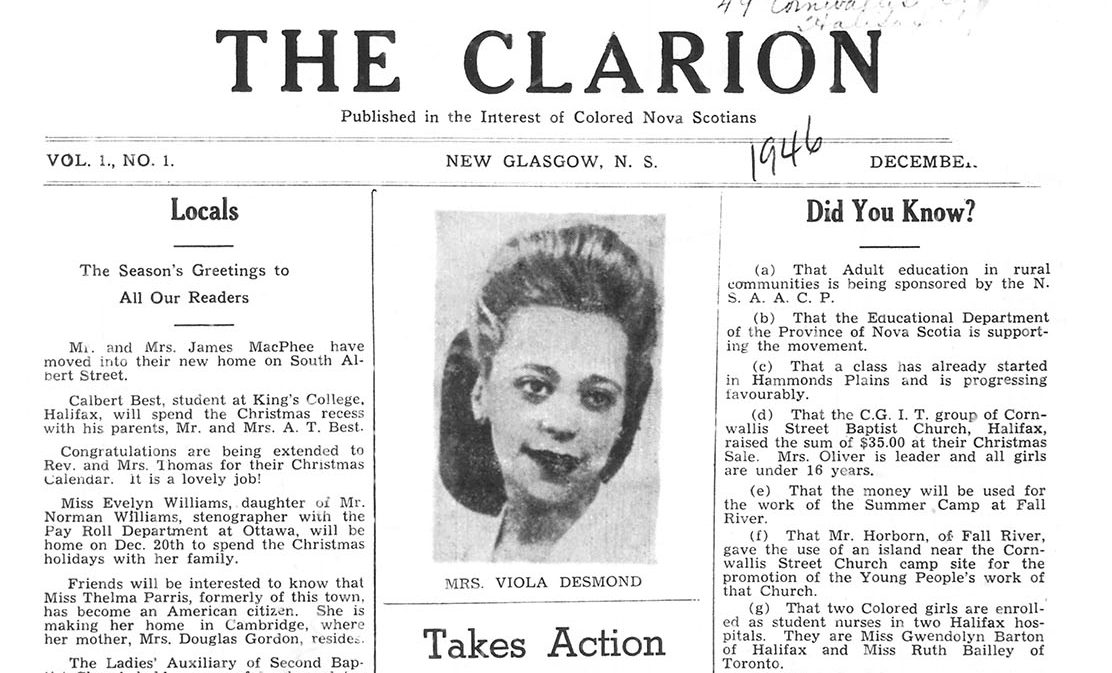 Flickr User "Nova Scotia Archives"
Flickr User "Nova Scotia Archives"Am I supposed to be thankful that the Canadian government is finally, finally, adding another woman to its banknotes?
Because I’m not.
On December 8, the Minister of Finance chose Viola Desmond as the new face of the Canadian $10 bill in 2018. For those of you who don’t know (which is probably most of you, since you never heard her name once in the 15 months of high school social studies classes), Desmond was a black rights activist on Canada’s east coast. She was jailed for sitting in a “whites only” section of a movie theatre — as a person of colour, Desmond was only permitted to sit in an upstairs balcony. And she was also the last of 461 women in the running to be on a Canadian banknote.
This means Canada will soon have two token currency women: a black rights activist and a non-Canadian queen (shoutout to the $20 for repping women since 1954). In 2018, prepare for yet another “Power Rangers” gender ratio: two women, three men.
It’s a pretty decent ratio compared to others. If you look at the voting members on the University of Alberta’s Board of Governors, you’ll see there are currently three women and 15 men as of November 1 — so, a 1:5 ratio. If you look an Avengers poster, you’ll see a 1:6 or 1:7 ratio, depending on the poster. For some women, it’ll feel good to see themselves getting more representation. But others are certain to shrug and say, “Yeah, that’s fine, but we’re still not at half-and-half, and also, why aren’t there any Indigenous people on our currency yet? We still have a long way to go.”
We definitely still have a long way to go.
The banknote competition generated a national conversation about significant Canadian women — that’s good. I applaud news outlets that profiled some of the 461 candidates and educated the public about women who have been left out of popular understandings of Canadian history. (P.S.: If you haven’t done so, I highly suggest reading the CBC’s article about Viola Desmond.)
But the banknote competition reminds me that there are numerous women in history that deserve recognition — not just one. There are at least 460 other Canadian women who could be discussed in Canadian K-12 education. There are at least 460 women who deserve recognition in historical segments of popular media. There are at least 460 women who should be considered as symbols of Canada (and not just symbols of Canadian feminist movements).
It also reminds me of how it took my former employer a year to fire Fuckboy Steve who refused to sweep the store’s floors because it was “women’s work,” interrogated female staff about their relationship and virginity status, and “accidentally” brushed past female staff members’ asses at least once per shift. Somehow, I doubt changing our money is going to affect that kind of behaviour.
And finally, it reminds me of a University of Alberta governance meeting where I heard a female member tell an anecdote of a recent dismissal of a victim of sexual harassment because she didn’t appear upset enough. A male committee member responded that the victim’s dismissal was unfortunate, but it was a procedural error, not a policy error, implying it was a problem that he could not solve. I know U of A governance isn’t really the federal government’s concern, but I feel the “sorry the policy sucks, but it’s all we have” attitude is standard among Canadian institutions.
Characteristic of 21st-century please-and-thank-you feminism, the banknote competition did little to change the how privileged men appear to show interest in empowering women and instilling gender equality/equity despite not actually giving a fuck in policy and practice.
We’ve had less than a year of Trudeau, and we’ve seen changes to the Canadian national anthem and now the Canadian $10 bill. But what needs to change are the institutional structures that made it acceptable for the Queen to be the sole woman on our banknotes for over a century.
Women need Social Studies 30-1 curriculums (though provincially-mandated, there could also be federal standards) to spend equal time discussing men and women. And women need access to an “abortion pill” rather than having to choose between a carefully-timed Plan B dose or a couple of clinic visits (if they’re lucky enough to live near one).
Right now, the history of Canadian women is still vague. And the agency of Canadian women is still less than that of men.
I’m still probably going to smile in 2018 when I pay my (likely female) server with a $10 Viola Desmond bill for the first time. But I’m not going to be thankful for the change unless the (likely female) server can expect Canadian education systems to teach about men and women equally, Canadian justice to handle sexual violence seriously, and Canadian medicine to grant women full reproductive agency.




